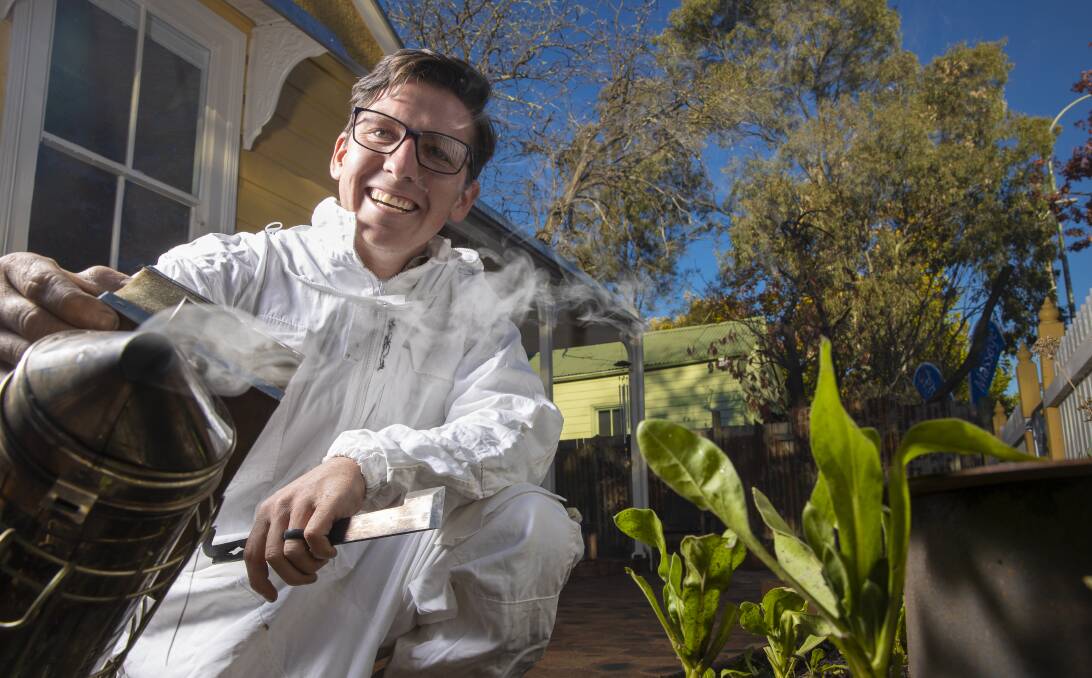Bees are a crucial part of our ecosystem but their numbers are declining globally.
Subscribe now for unlimited access.
or signup to continue reading
Canberrans are are being encouraged to do their bit to help protect our buzzing buddies by creating a bee friendly garden.

Horticulturalist and beekeeper Andrew Colwell is passing along his tips at the newly restored Queanbeyan Hive art gallery on Sunday.
Mr Colwell said due to the nature of his work he became fascinated in the system of where our food comes from and the role bees play within that.
"Two-thirds of the food we eat results from pollination of bees and other beneficial insects," he said.
"It's really important for people to get involved in gardening, to provide habitats to encourage beneficial insects."
He loves passing along any knowledge he can about gardening and bees and he said people were generally very interested in bees.
Mr Colwell's top tips for creating a bee friendly garden begin and end with flowering plants, lots of them, don't hold back.
"You want to create a smorgasbord of all sorts of native and exotic flowering plants," Mr Colwell said.
"You don't want a limited variety."
Some of his recommendations include bottle brushes, tea trees - which are used for Manuka honey in New Zealand - Grevilleas and if you have the space, eucalyptus. Yellow gums and red flowering gums are particularly popular.
Lavender, sage, and rosemary are also great options, and provide the added benefit of being useful for cooking.
One thing Mr Colwell said people often forget is to provide an appropriate water source for bees.
A colony of bees can go through about a litre of water a day in summer, he said.
Something to keep in mind is that bees can't land directly on water like other insects, their bodies will absorb water and they will drown. So sticks, submerged rocks or something for them to land on near water is necessary.
Leaving an area of the garden untouched, where sticks and bark can collect is important as this provides a suitable home for beneficial insects.
Mr Colwell said people shouldn't just focus on honey bees as native bees, butterflies and others are crucial for pollination.
Finally, and perhaps most importantly, steer clear of harsh pesticides and look for natural alternatives.
These are all tips Mr Colwell will be providing at the Queanbeyan Hive on Sunday, along with a local honey tasting, as part of the Australian Heritage Festival.
The Queanbeyan Hive is a recently restored early 1900s cottage in Crawford Street.
It was formerly an office space but over the past year Helen Feguson and her team, including husband Simon, have restored the heritage cottage and re-opened it as a gallery and cultural hub.
Mr Colwell will be showcasing the cottage's bee friendly garden and visitors will be invited to help plant more shrubs into planter boxes that were once bee hives.
Mrs Ferguson was born in Queanbeyan, and her father kept bees in the town, which is the source of the old hives.
Mrs Ferguson said the inspiration behinds the name was that the cottage almost felt like a beehive with its patterned walls inside and she hoped it would be a hive of creativity for the community. Using some NSW government grants the team were able to restore the building in a number of energy efficient ways while maintaining the heritage.
The bee friendly garden is all part of the theme of sustainability at the cottage in the hope it will be a part of the creative scene in Queanbeyan for a long time to come.

